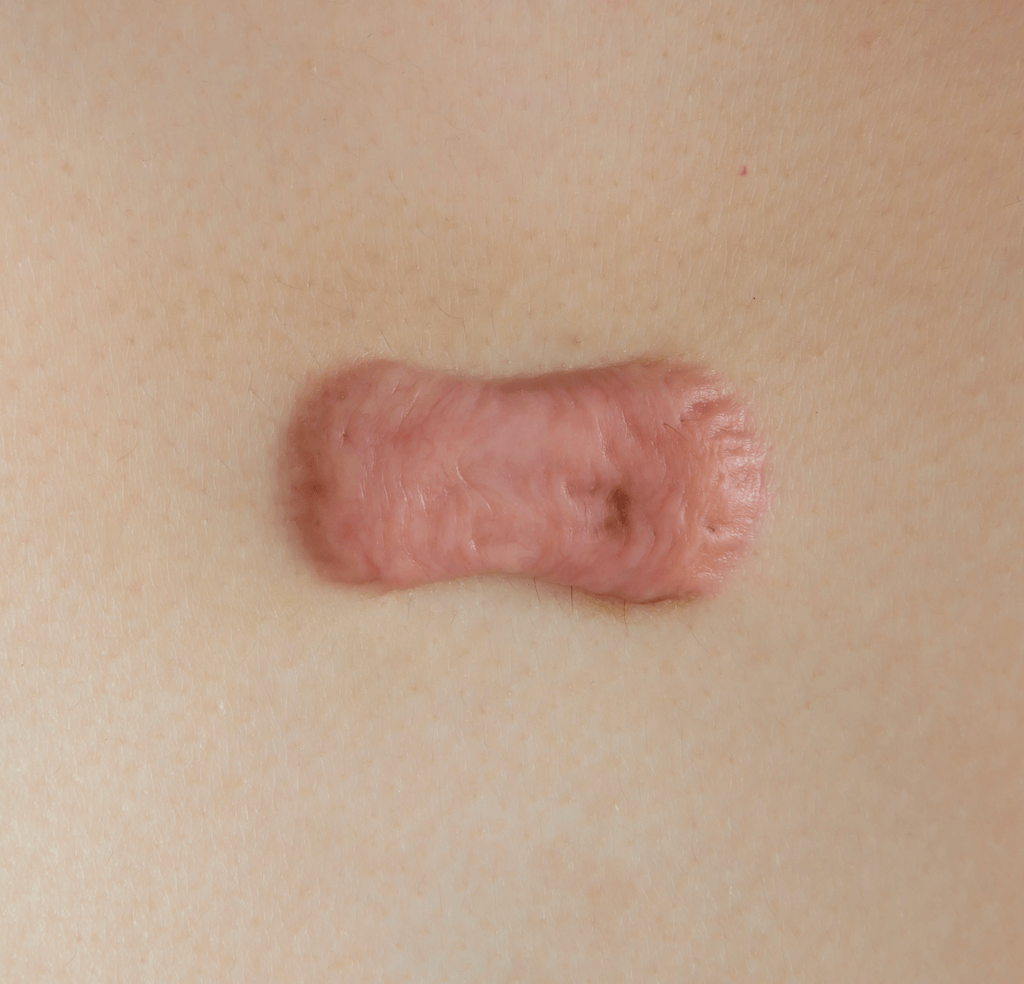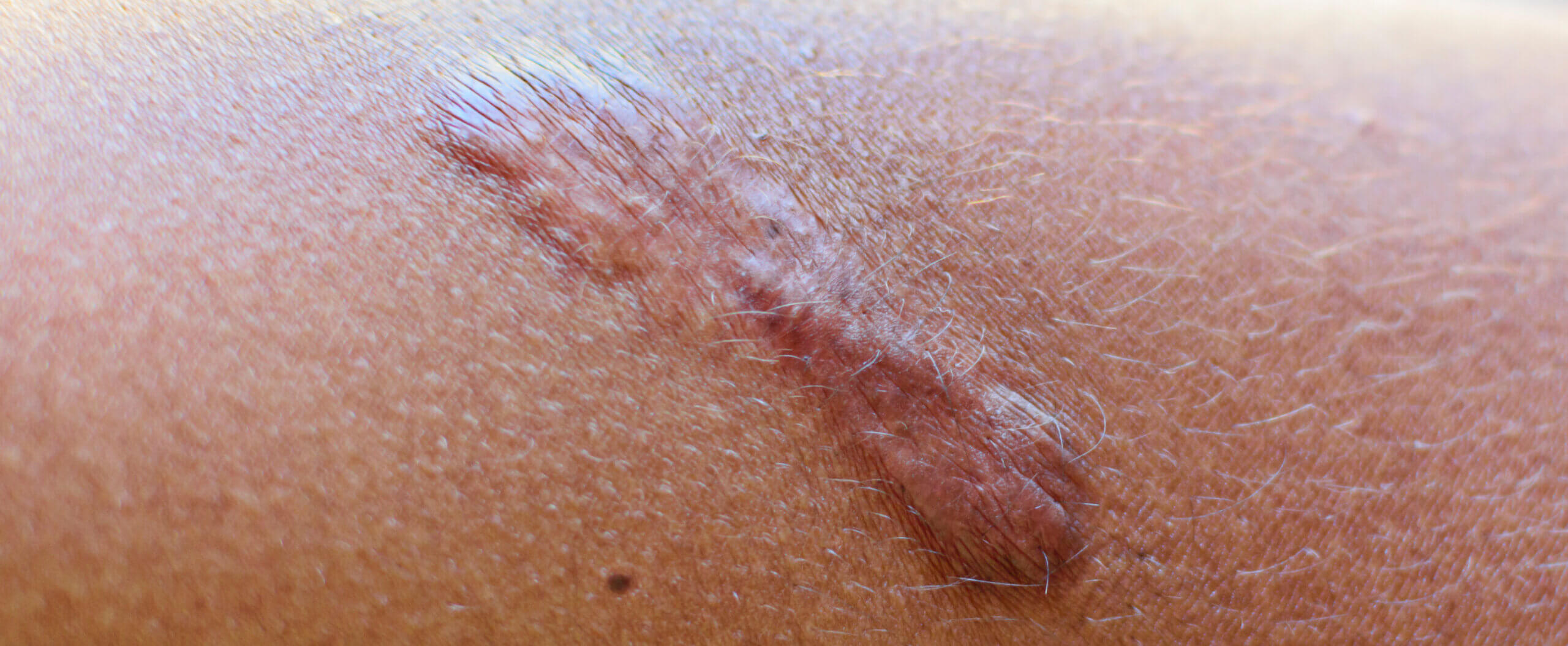Keloid Scars
Medical and surgical treatments to minimise the appearance of a keloid scars
Scars form as a part of the body’s natural healing process. Often, scars shrink and fade over time, but sometimes they remain large, raised, depressed, discoloured, itchy, or painful. Occasionally they grow to exceed the boundaries of the original wound, a type of scar called a keloid.
A keloid may be:
– Flesh-coloured, red, or pink
– Located over the site of a wound or injury
– Lumpy or ridged
– Tender and itchy
– Irritated from friction such as rubbing on clothing
A keloid will tan darker than the skin around it if exposed to the sun during the first year after it forms. The darker colour may not go away.
Dermatologists at Devonshire Dermatology offer medical and surgical treatments to minimise the appearance of a scar, reposition it to make it less noticeable, or reduce the surface area of multiple scars by combining them. Our dermatologists are actively involved in clinical research to integrate new and effective techniques and recommend treatment based on the type, size, and location of a scar. Each treatment plan is personalised to meet your aesthetic and functional goals.
Treatment for Scars and Keloids includes laser therapy and corticosteroid injections to reduce redness and discolouration or improve the appearance of thick scars. For large, raised or depressed scars, we may propose procedures to make them less noticeable and prevent them from growing wider.
For keloids, our dermatologists may recommend surgical removal and reconstruction.


Consultation
- Detailed history of your skin concern
- Total skin examination
- Holistic assessment of your health
- Diagnosis
- Discussion of treatment options
- Personalised treatment plan
- Treatment
FAQs
A keloid is a frustrating and sometimes debilitating way that some people scar. Our body forms scars to help heal and seal over a wound or injury. Normally, there is an inflammatory period of wound healing which transitions to a growth phase of scar tissue formation which soon after receives a signal to enter into a maturation phase in which scar tissue flattens and softens and fades. In individuals who may have genetic or other risk factors to form hypertrophic or keloid scars, there may be heightened or prolonged inflammation which leads to an overgrowth of scar tissue. This overgrowth of scar tissue may “miss” the signal to stop forming and start to remodel and mature. The abnormal scar tissue may stay within the borders of an injury or incision (hypertrophic scars), or continue to grow and begin to extend beyond the borders of the original injury or incision (keloid).
See answer

The exact cause of keloids is not fully understood, but it is thought to be related to a heightened and prolonged inflammatory state as well as the overproduction of collagen, the protein that makes up the connective tissue in our bodies. Keloids can develop in response to any type of injury or trauma to the skin, including cuts/scratches, surgical incisions, burns, tattoos, piercings, and acne.
See answer

Keloids are very frustrating and can be difficult to treat, and there often is no “one size fits all” treatment. Some options include corticosteroid injections, laser therapy, radiation therapy and surgical removal. In many cases, a combination of treatments may be necessary.
See answer

Anyone can develop keloids, but some people are more prone to forming keloids than others, mainly due to their genetics. People with darker skin tones and those of African or Asian descent are more likely to develop keloids, as are people who have a family history of keloids.
See answer

While there is no absolute way to prevent keloids, there are steps you can take to reduce the risk of a keloid forming. These include avoiding unnecessary skin trauma, keeping a wound site clean and protected while it heals, minimizing tension or stretch on a scar while healing, and avoiding piercing or tattooing.
See answer

Keloids are benign, not contagious, and not dangerous in and of themselves, but they can be unsightly and may cause discomfort, pain or itching. In some cases, depending on their size and location, they may also restrict movement of joints, cause issues with ingrown hairs or skin infections, or interfere with normal bodily functions.
See answer



